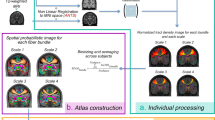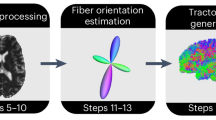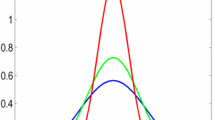Abstract
The ‘rich club’ is a relatively new concept in brain connectivity analysis, which identifies a core of densely interconnected high-degree nodes. Establishing normative measures for rich club organization is vital, as is understanding how scanning parameters affect it. We compared the rich club organization in 23 subjects scanned at both 7 and 3 T, with 128-gradient high angular resolution diffusion imaging (HARDI). The rich club coefficient (RCC) did not differ significantly between low and high field scans, but the field strength did affect which nodes were included in the rich club. We also examined 3 subjects with Alzheimer’s disease and 3 healthy elderly controls to see how field strength affected the statistical comparison. RCC did not differ with field strength, but again, which nodes differed between groups did. These results illustrate how one key parameter, scanner field strength, impacts rich club organization – a promising concept in brain connectomics research.
Access this chapter
Tax calculation will be finalised at checkout
Purchases are for personal use only
Similar content being viewed by others
References
Colizza, V., et al.: Detecting rich-club ordering in complex networks. Nat. Phys. 2, 110–115 (2006)
Van den Heuvel, M., Sporns, O.: Rich-club organization of the human connectome. J. Neurosci. 31(44), 15775–15786 (2011)
Dennis, E.L., et al.: Development of the “rich club” in brain connectivity networks from adolescents and adults aged 12 to 30. In: Proceedings of the 10th IEEE ISBI, pp. 624–627 (2013)
Zhan, L., et al.: Magnetic resonance field strength effects on diffusion measures and brain connectivity networks. Brain Connectivity 3(1), 72–86 (2013)
Stanisz, G.J., et al.: T1, T2 relaxation and magnetization transfer in tissue at 3T. Magn. Reson. Med. 54, 507–512 (2005)
Yacoub, E., et al.: Spin-echo fMRI in humans using high spatial resolutions and high magnetic fields. Magn. Reson. Med. 49, 655–664 (2003)
Gallichan, D., et al.: Addressing a systematic vibration artifact in diffusion-weighted MRI. Hum. Brain Mapp. 31, 193–202 (2010)
Smith, S.M., et al.: Advances in functional and structural MR image analysis and implementation as FSL. Neuroimage 23, 208–219 (2004)
Woolrich, M.W., et al.: Bayesian analysis of neuroimaging data in FSL. Neuroimage 45, S173–S186 (2009)
Wang, R., Benner, T., Sorensen, A.G., Wedeen, V.J.: Diffusion toolkit: a software package for diffusion imaging data processing and tractography. Proc. Intl. Soc. Magn. Reson. Med. 15, 3720 (2007)
Basser, P.J., et al.: In vivo fiber tractography using DT-MRI data. Magn. Reson. Med. 44, 625–632 (2000)
Duarte-Carvajalino, J.M., et al.: Hierarchical topological network analysis of anatomical human brain connectivity and differences related to sex and kinship. Neuroimage 59(4), 3784–3804 (2012)
Desikan, R.S., et al.: An automated labeling system for subdividing the human cerebral cortex on MRI scans into gyral based regions of interest. Neuroimage 31, 968–980 (2006)
Morgan, V.L., et al.: Integrating functional and diffusion magnetic resonance imaging for analysis of structure-function relationship in the human language network. PLoS One 4, e6660 (2009)
Rubinov, M., Sporns, O.: Complex network measures of brain connectivity: uses and interpretations. Neuroimage 52, 1059–1069 (2010)
Benjamini, Y., Hochberg, Y.: Controlling the false discovery rate: a practical and powerful approach to multiple testing. J. R. Stat Soc B 57(1), 289–300 (1995)
Author information
Authors and Affiliations
Corresponding author
Editor information
Editors and Affiliations
Rights and permissions
Copyright information
© 2014 Springer International Publishing Switzerland
About this paper
Cite this paper
Dennis, E.L. et al. (2014). Rich Club Analysis of Structural Brain Connectivity at 7 Tesla Versus 3 Tesla. In: Schultz, T., Nedjati-Gilani, G., Venkataraman, A., O'Donnell, L., Panagiotaki, E. (eds) Computational Diffusion MRI and Brain Connectivity. Mathematics and Visualization. Springer, Cham. https://doi.org/10.1007/978-3-319-02475-2_19
Download citation
DOI: https://doi.org/10.1007/978-3-319-02475-2_19
Published:
Publisher Name: Springer, Cham
Print ISBN: 978-3-319-02474-5
Online ISBN: 978-3-319-02475-2
eBook Packages: Mathematics and StatisticsMathematics and Statistics (R0)




